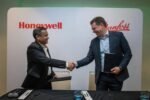Stuart Downes, Gartner Senior Research Director, lists 3 cloud technologies to support hybrid work experiences.
Infrastructure and operations (I&O) leaders are investing here — and wisely so.
The pandemic has strained on-premises digital workplace solutions, accelerating the shift to cloud-hosted technology and services. As infrastructure and operations (I&O) leaders look toward technologies that support the future of work, they are increasingly investing in cloud-powered technologies that can deliver services to employees in any location.
“The shift to hybrid work affords I&O leaders an opportunity to deliver meaningful changes in the ways that services are delivered and increase their focus on employee experiences,” says Stuart Downes, Gartner Senior Research Director. “Cloud-powered workplace technology enables work from anywhere while also optimizing costs, improving processes and increasing technology performance.”
Here are three cloud-powered digital workplace technologies that you will increasingly rely upon to serve employees in a distributed enterprise and support the future of work.
No. 1: Digital employee experience tools
With remote and hybrid work, employees predominantly interact with peers, vendors and customers through technology. This demands deeper visibility into and management of the end-user experience.
Digital employee experience (DEX) tools are an evolution of digital experience monitoring, unified endpoint management (UEM), and remote monitoring and management tools. DEX tools offer new capabilities, including the collection of employee sentiment data, integration of team and organizational structure data, and actionable insights driven by improved analytics and machine learning (ML) engines. These new capabilities have exponentially increased the use cases supported by DEX tools.
Gartner expects DEX adoption to rapidly increase in the coming years: By 2025, 50% of IT organizations will have established a digital employee experience strategy, team and management tool, an increase from 5% in 2021.
No. 2: Unified endpoint management
UEM provides the ability to manage a broad range of devices, the policies applied to those devices, and the distribution of applications, patching and updates from a cloud solution. This is critical for maintaining device security and compliance across the enterprise, no matter where employees are located.
UEM simplifies endpoint management by consolidating disparate tools and streamlining processes across devices and operating systems. UEM has expanded beyond management to offer deeper integration with identity, security and remote access tooling to support a zero trust security model that enables the anywhere workforce. Leading UEM tools are also using analytics and ML to enable intelligence-driven experience automation to reduce IT overhead and improve employee experience.
According to the Gartner Employee Impacts of Anywhere Operations survey, 87% of organizations plan to maintain or increase UEM investment. By adopting UEM, you can streamline operations and improve endpoint management in the distributed enterprise.
No. 3: Desktop as a service
Hybrid work requires an increased focus on security and more endpoint flexibility. Desktop as a service (DaaS) provides a virtual desktop or application in the cloud, enabling you to increase security by removing the need to store applications or data on endpoints. It also allows rapid increases in the number of users without the need to provision high-specification, enterprise-owned endpoints.
DaaS has found a niche among organizations that want to enable distributed work without the need for data to reside on endpoints in the home. As such, Gartner forecasts DaaS spending to more than double by 2024. However, lack of skills and complexity remain a significant barrier to DaaS adoption. When selecting a DaaS vendor, balance the level of configuration available, the services offered by the DaaS vendor and the desktop virtualization skills available in-house.











